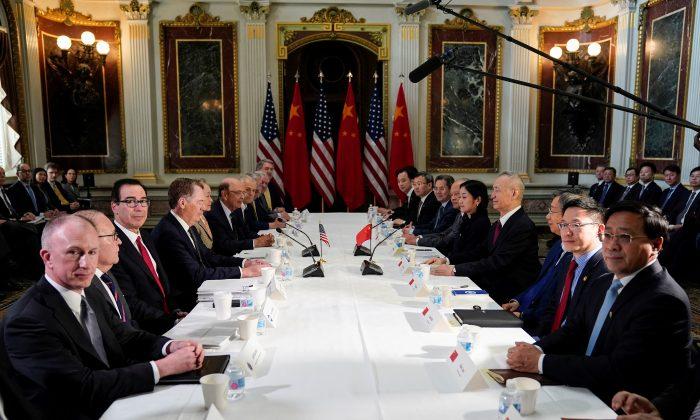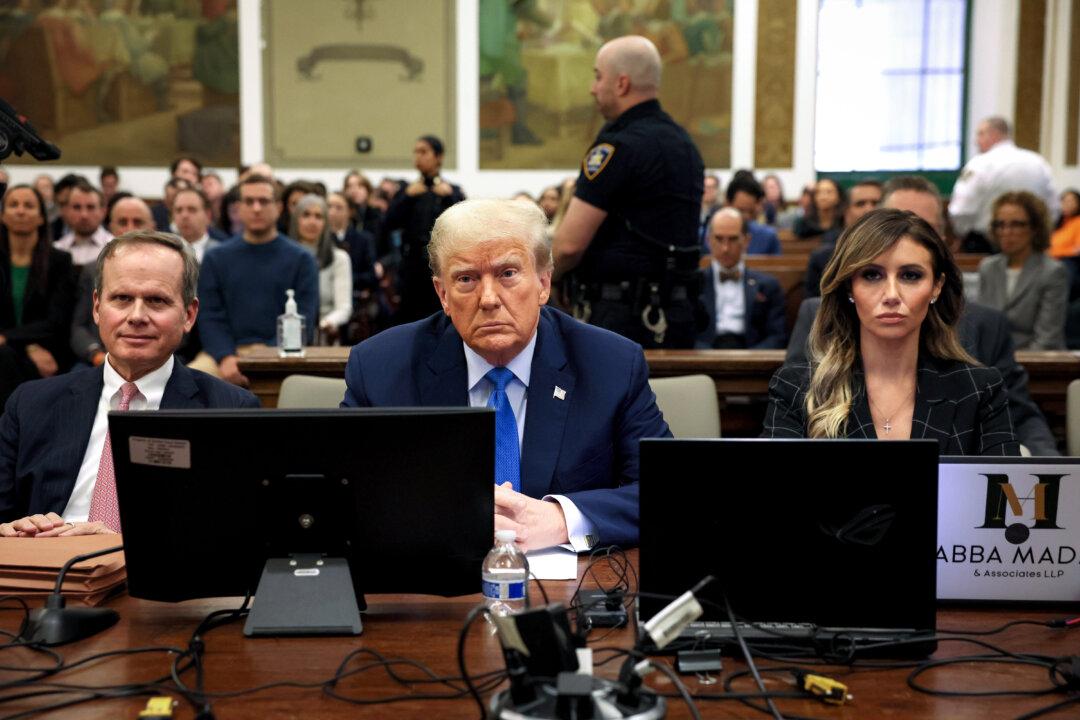Commentary
China has resorted to hardball tactics in its trade negotiations with the United States.
Is that a good thing? On the face of it, perhaps not. But viewed from another angle, it may tell us everything we need to know about China’s intentions, needs, and weaknesses.
Nobody seriously disagrees (other than the Chinese, perhaps) that a trade reset with the United States is way overdue. To put it in context, the U.S. imported around $323 billion in goods from China in 2018 while exporting about $130 billion. Clearly, the trade imbalance is heavily in China’s favor—and that gap continues to grow. U.S. imports from China rose by almost 12 percent last year, while U.S. exports to China grew by less than
one percent.
But the U.S.–China trade relationship is more complicated than simply these very obvious imbalances. For instance, many of the goods China sells to the United States are assembled in China but made—at least partially—with American parts. Perhaps more importantly, 37 percent of Chinese exports are parts and components that U.S. manufacturers need in order to make their products.
That reality makes U.S. manufacturers potentially vulnerable to higher tariffs on Chinese goods, not to mention whatever trade tricks China may have in mind.
US Goodwill Rewarded With Malevolence
In December 2018, the United States delayed escalating the tariffs on $200 billion worth of Chinese goods from 10 percent to 25 percent as a show of goodwill. Still, China continues to play dirty.Over the past year, the Chinese have been cutting new deals with the Europeans and undercutting U.S. deals where they can.
For example, China is taking full advantage of the Boeing 737 MAX aircraft grounding by posturing as a global authority in aircraft safety, a subject in which its experience is limited at best. China has also appointed itself as the lead in the lawsuits against the U.S. commercial aircraft maker while at the same time steering its business toward Boeing’s European competitor,
Airbus. (Perhaps China might first gain safety expertise in more grounded areas, such as in chemical manufacturing, where its abysmal safety and pollution records remain
consistent and
lethal.)
In 2018, in the wake of U.S. fines against Chinese tech giant ZTE for illegally shipping telecom equipment to Iran and North Korea, China was the sole voice of dissent and
prevented American chipmaker Qualcomm from completing its $44 billion acquisition of Dutch chipmaker NXP. Even after the Trump administration agreed to allow ZTE back into the American market, China still killed the Qualcomm-NXP deal. There are scores of such examples of China’s adversarial and even malevolent trading practices while they’ve enjoyed ridiculous trade advantages.
Given these facts, a few questions come to mind:
1. Can the U.S. really afford a trade war with China?
U.S. chipmaker Qualcomm has certainly been very negatively affected by the trade war, but that’s not the whole picture. According to the Coalition for a Prosperous America, an additional
261,000 manufacturing jobs have been added since Trump’s tariffs came into effect. Many of those new jobs were in the aviation, defense, and auto industries.
Other businesses small and large will both benefit and be harmed by the tariffs, depending on their industry and component sources. Some view it as much-needed leveling of the playing field while others see the tariffs as an additional manufacturing cost they must bear.
2. What do China’s actions tell us about the current economic conditions there?
This gets to the heart of the Chinese economic story. In 2018, World Bank estimates put China’s GDP at
$10.8 trillion and in 2019, other estimates put it around $12 trillion, a difference that puts its annual economic growth at about 10 percent. That’s simply not realistic and neither are the official statistics that the Chinese Communist Party sells its people and the rest of the world. China’s economic reporting relies upon a heavy dose of fiction and censorship of official economic statistics.
A much more conservative and reasonable estimate comes from scholar Luis Martinez in his
2018 study at the University of Chicago, which examines “the direct link between the amount of light produced by an economy—as captured and measured through nighttime satellite photographs—and its GDP.” According to that measure, China’s GDP is inflated by at least 30 percent, at around
$7.5 trillion.
What’s more damning is that China’s debt-to-GDP ratio is about 250 percent, or 2.5 times that of the United States. With such a truncated economy and debt that may become a crisis in the midst of the current slowdown, China is actually in a much more desperate situation than they would like the world—or their people—to realize. These two bits of data put China’s belligerence in a much different context, don’t they?
Furthermore, Martinez’ research is backed up by a 2012 study by Brown University and the National Bureau of Economic Research on how nighttime lighting levels mirror economic activity. And in 2014, economics professor at Hitotsubashi University in Tokyo
Harry Wu, estimating China’s economy in a completely different fashion, determined that its GDP was inflated by 36 percent. To paraphrase Mark Twain, “reports of China’s economic health are greatly exaggerated.”
3. If a workable deal is not struck—or even if one is—what should U.S. trade strategy be?
Contrary to some claims that the
United States is much more vulnerable than China is in this trade war, it appears that China, even with its censorship and totalitarian society, is much less immune to trade tariffs than is believed. That’s why even if a trade agreement is reached, it’s likely that China will ignore the terms simply because it would have to. It should be no surprise that enforcement mechanisms remain a
major obstacle in the talks.
Given these factors, the key to winning the trade war with China is Europe. U.S. trade policy should be as much about the United States expanding trade with the UK and the Eurozone as it is about limiting China’s trade with them. Doing so would help create more demand, deepen our relationships there, and drive China into a deeper economic hole. It may even cause a political crisis at home for the Chinese Communist Party.
4. Trade is about Geopolitics
China is in the middle of a grand geopolitical march across the globe with its One Belt, One Road initiative. From Central Asia, Africa, Europe, to South America, China is achieving its ambitious drive to displace U.S. influence around the globe by leveraging trade and foreign investment. It’s also intent on kicking the United States and Europe out of whole technology manufacturing sectors with its Made In China 2025 plan. But all of these objectives are supported by massive deficits and heavy civilian crackdowns at home, along with the wholesale theft of intellectual property and technology from the West.
For those reasons, American trade policy must treat China as the depraved totalitarian society that it is and pursue aggressive trade agreements with Europe, the UK, and Latin America. The goal ought to be to strangle the Chinese economy and see just how patient the Chinese people will be with the Chinese Communist Party.
James Gorrie is a writer based in Texas. He is the author of “The China Crisis.”
A previous version of this article included a typo for the name of the Dutch chipmaker. The Epoch Times regrets the error.






Friends Read Free